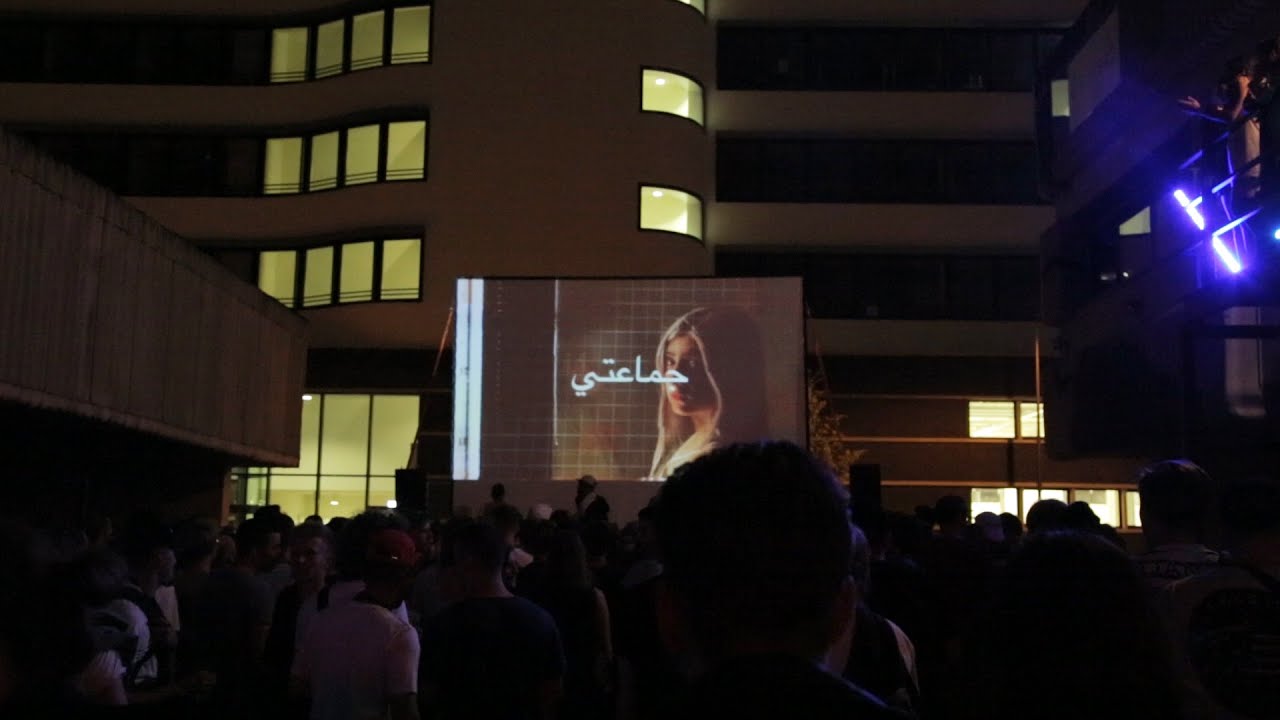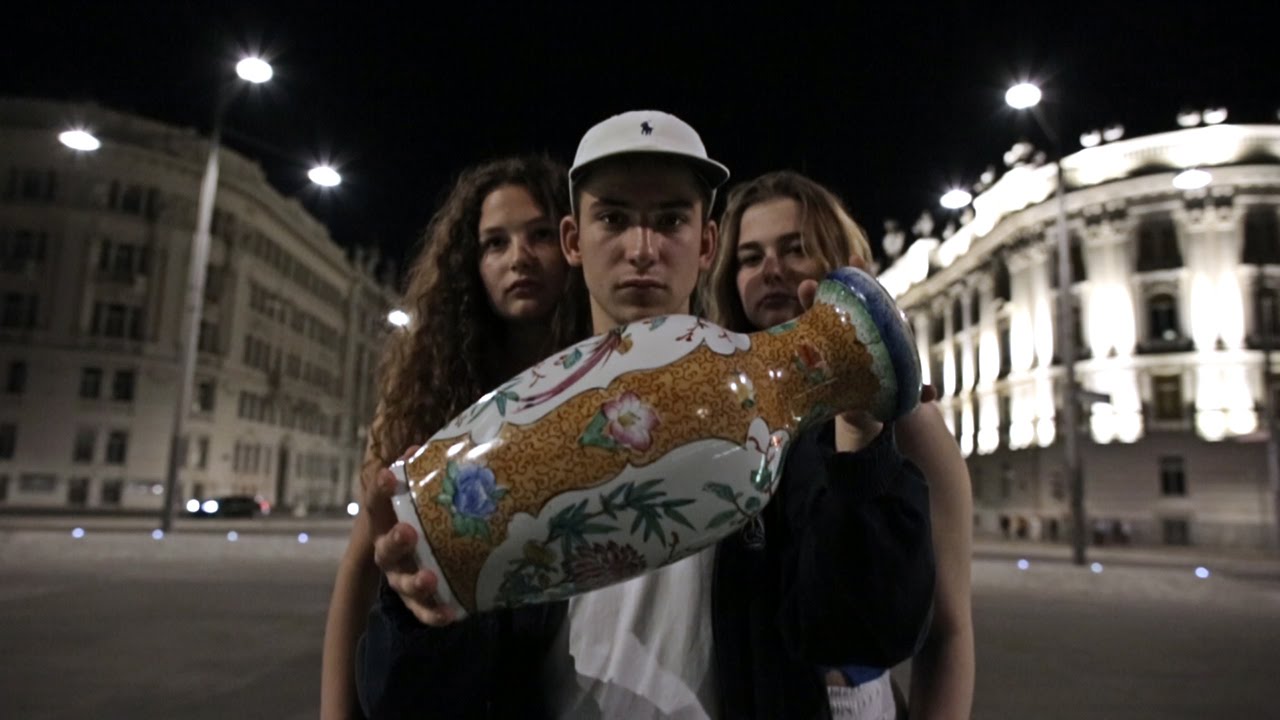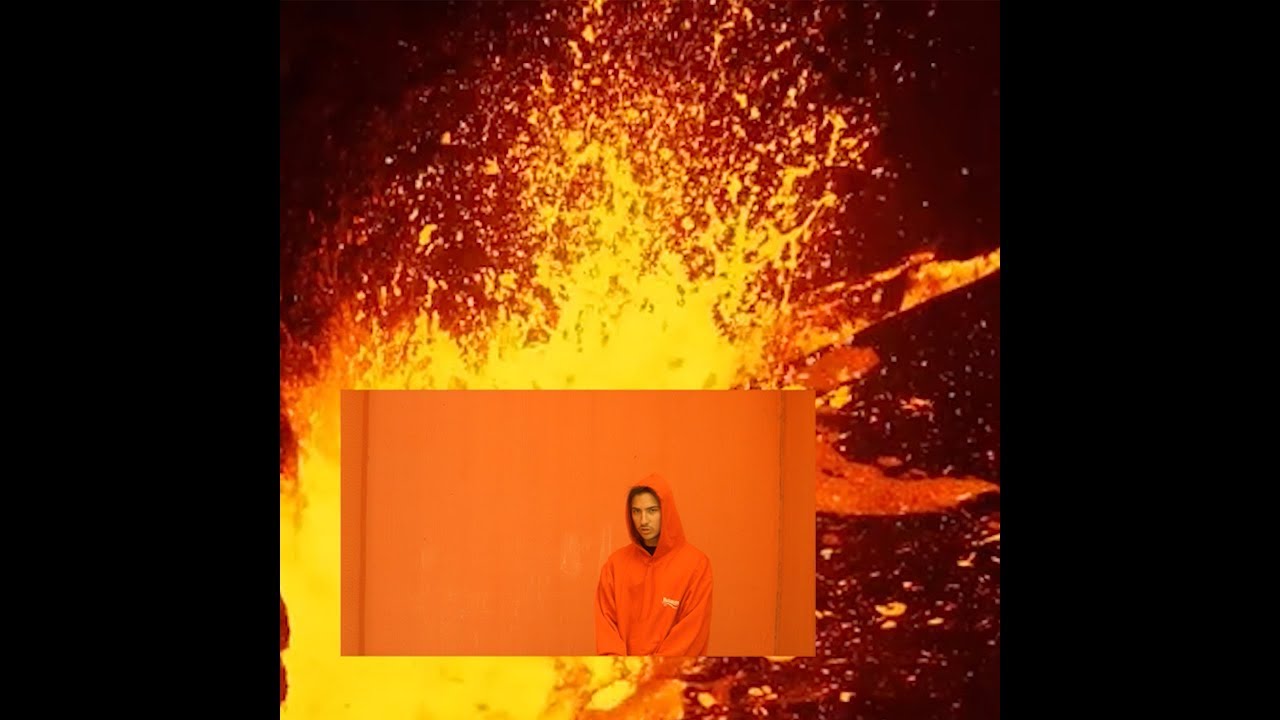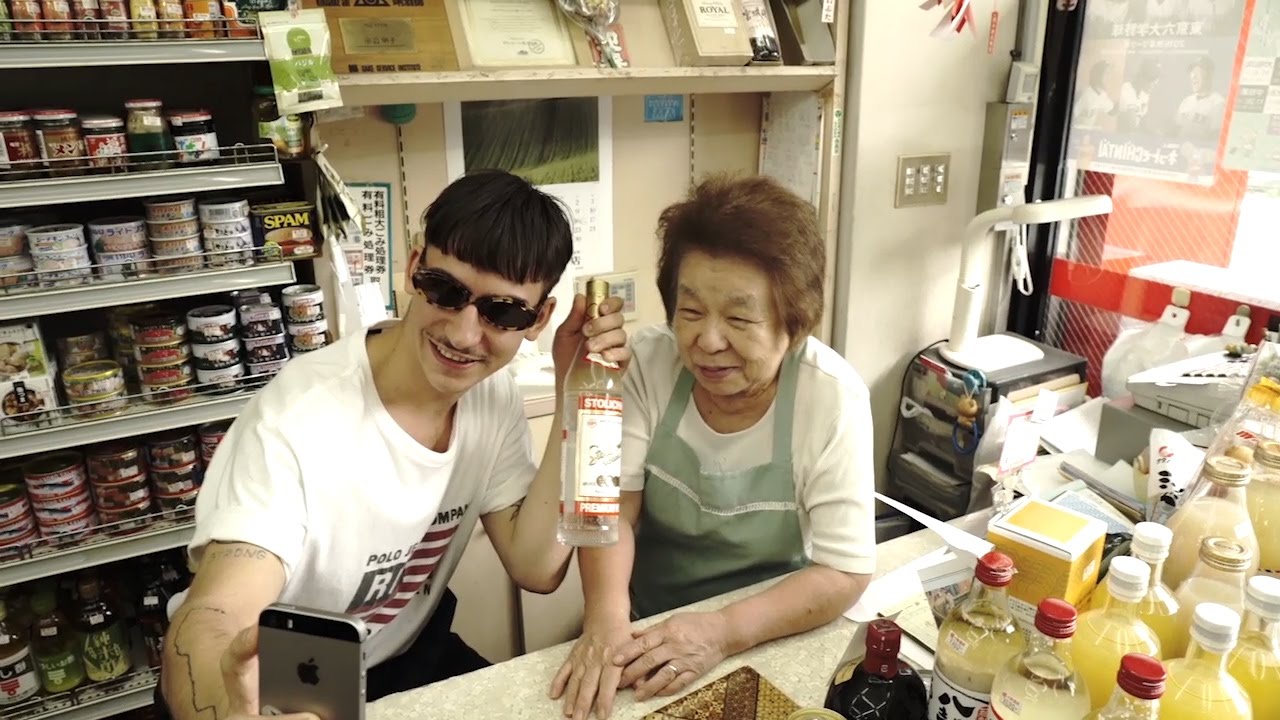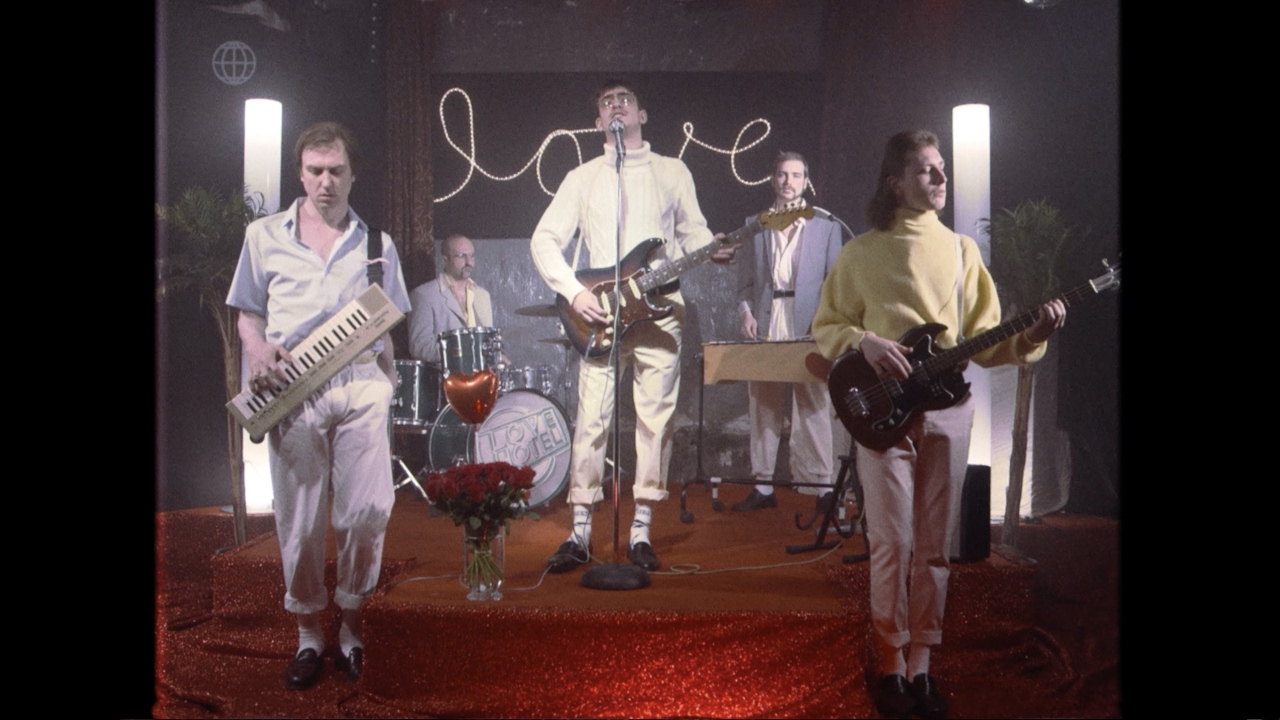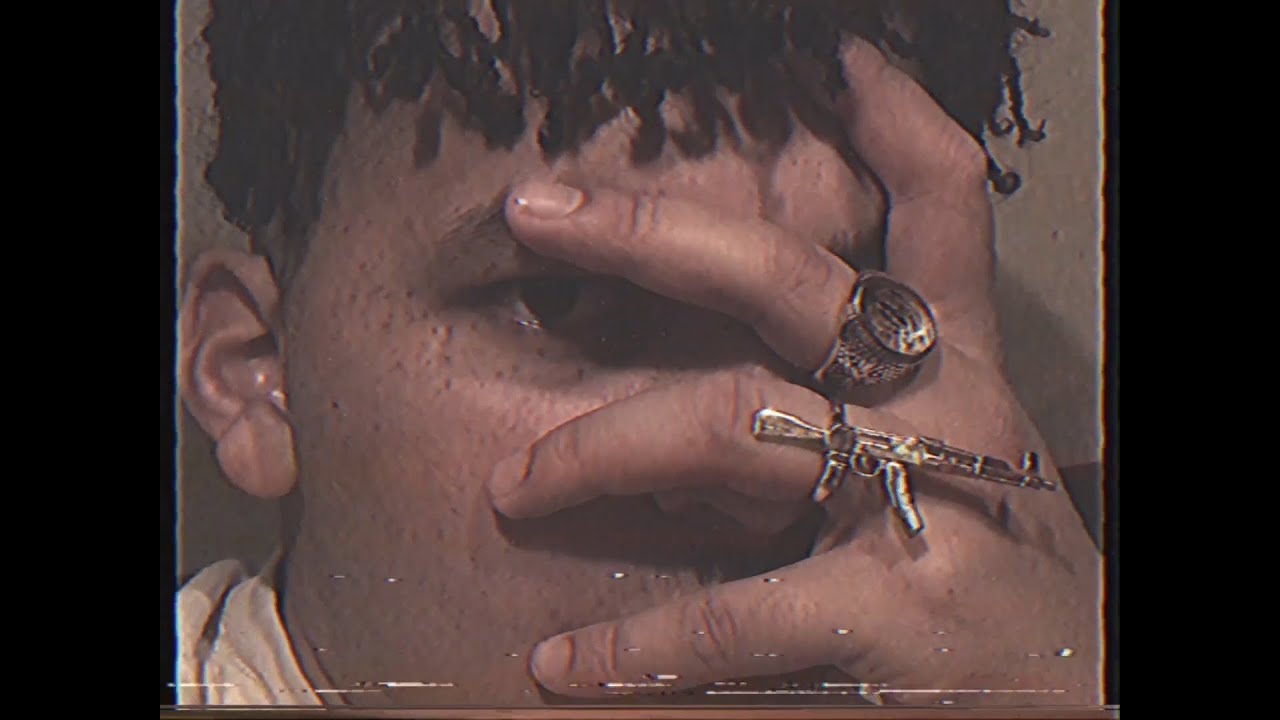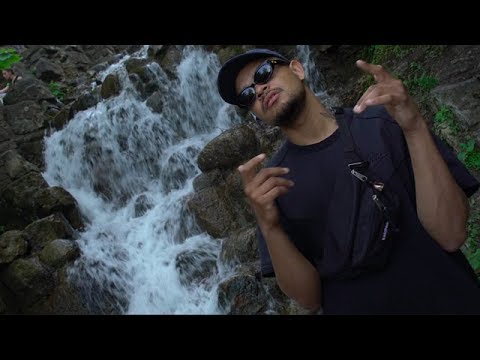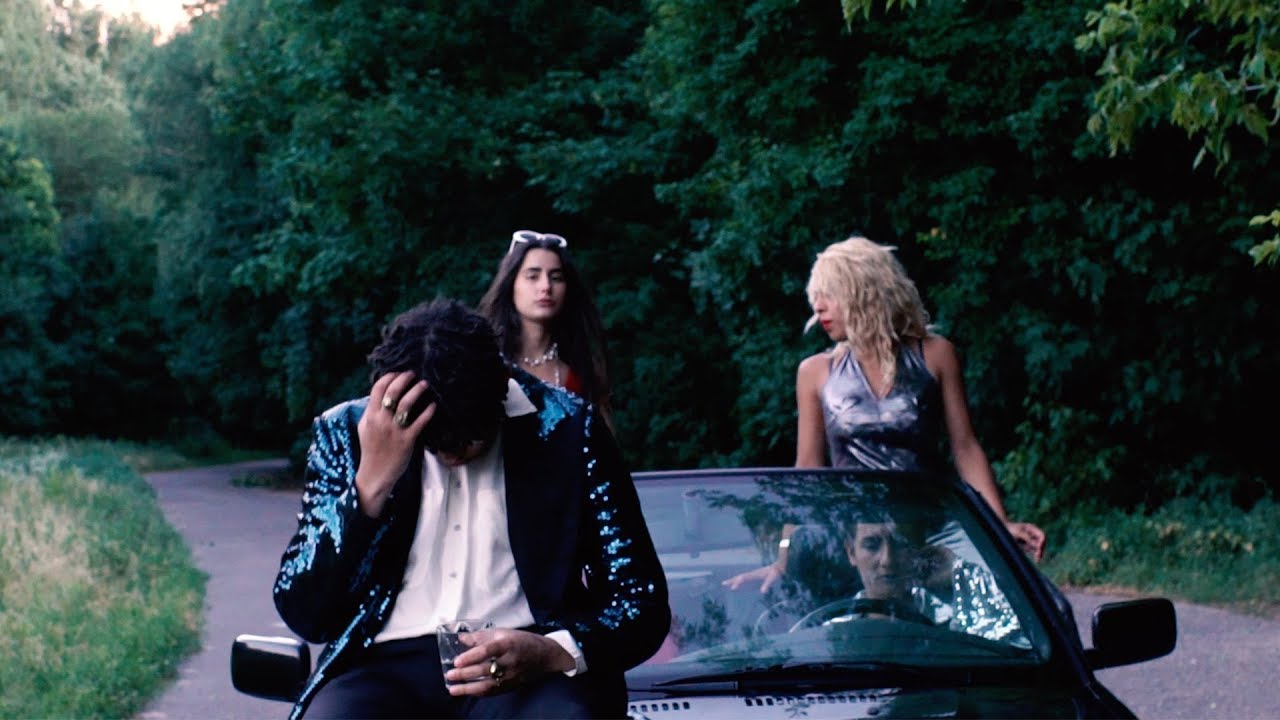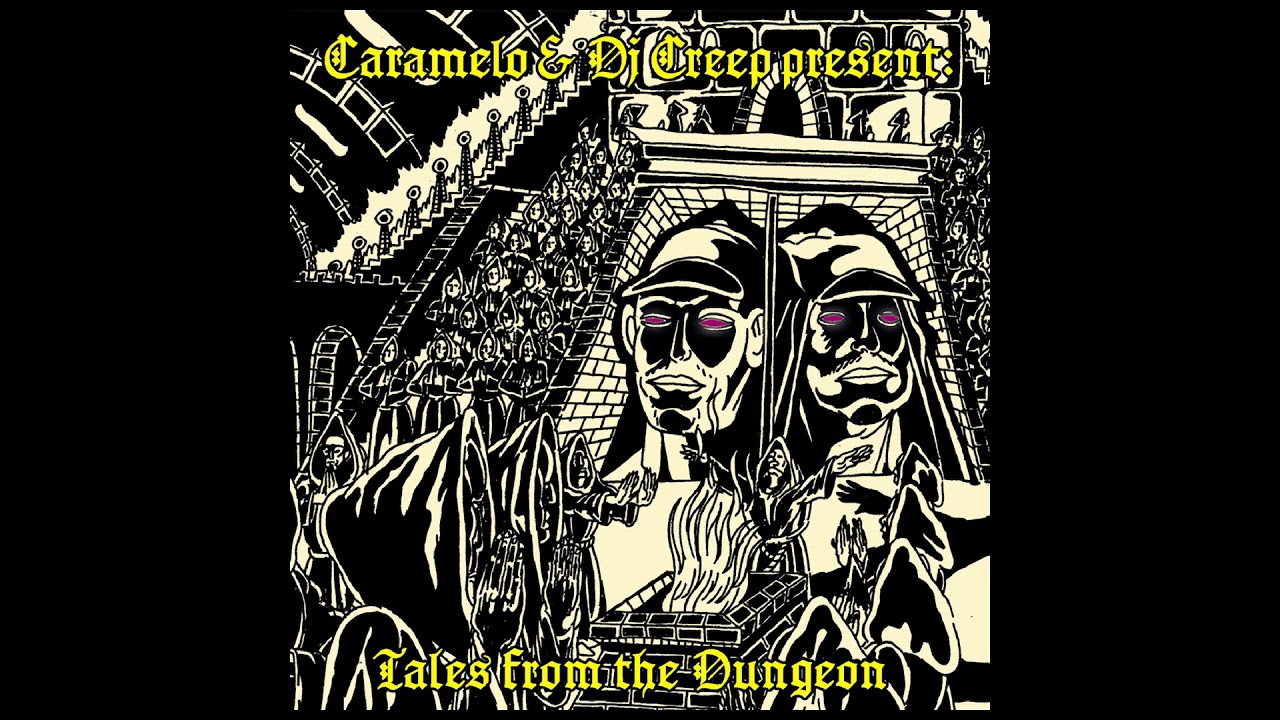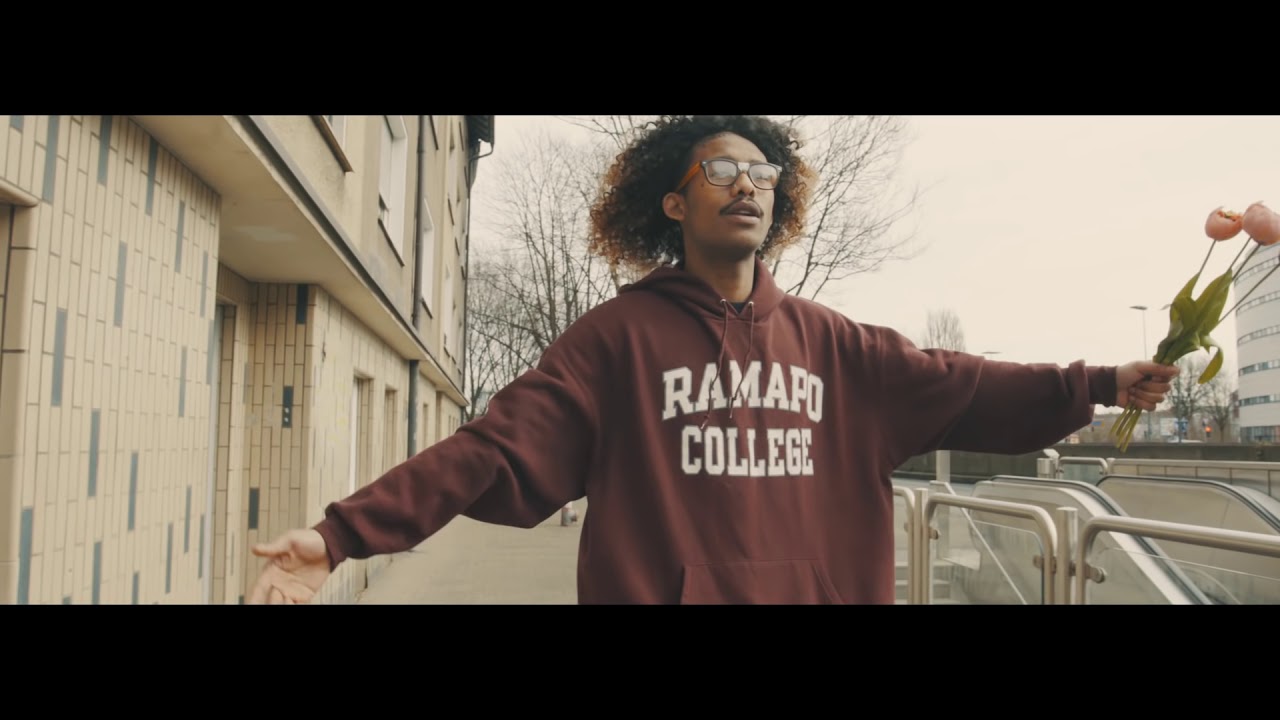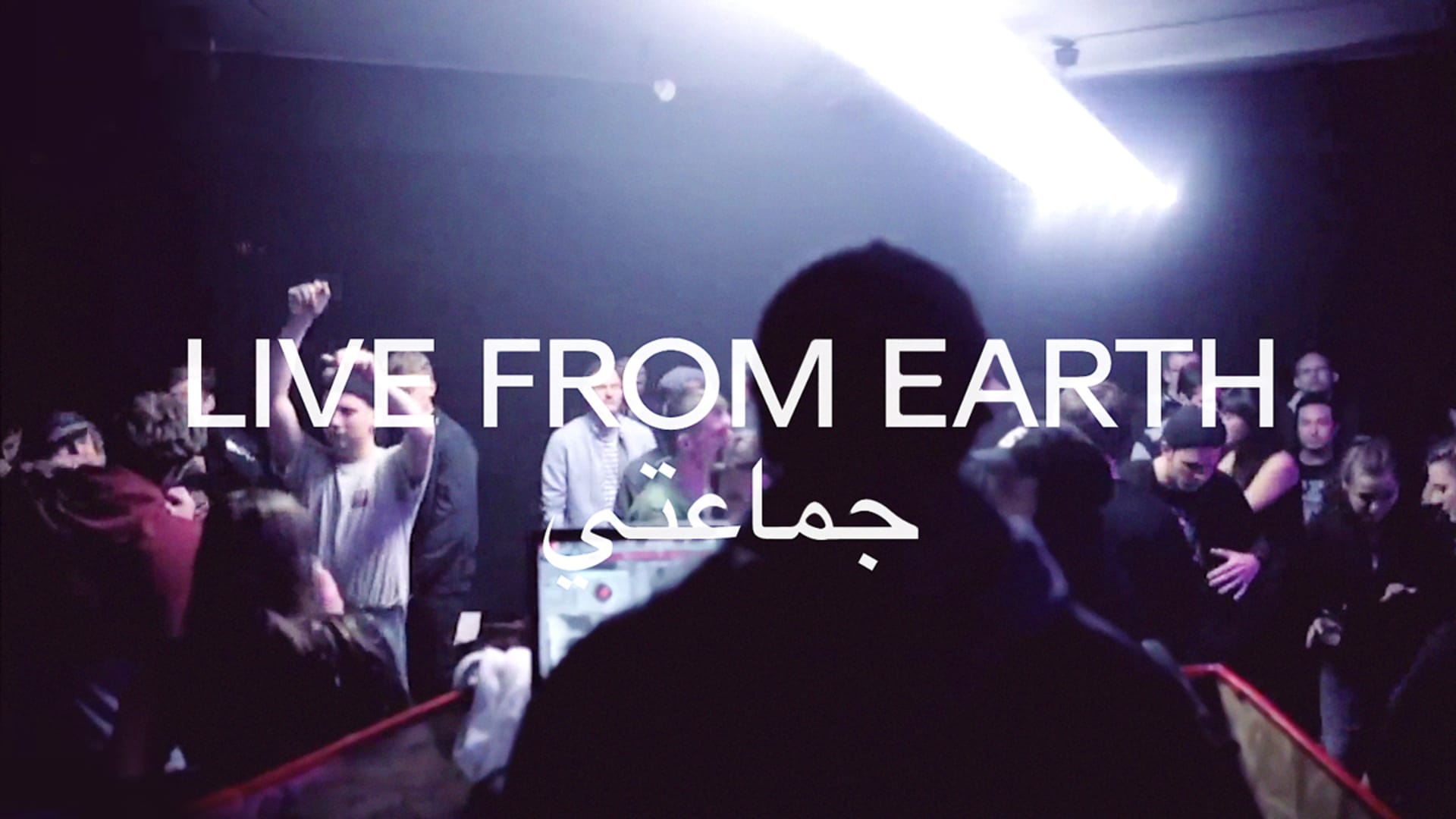
A Beginner’s Guide To Live From Earth, The Collective Reshaping Berlin’s Music Scene
From eccentric rap releases by Yung Hurn to wild gabber parties in west Berlin, meet the revolutionary artist collective reshaping the city's underground music scene.
The world is changing, and dance music is changing with it. In Berlin, nowhere is that illustrated better than in the arrival of the multi-disciplinary collective Live From Earth جماعتي.
Flying in the face of Berlin’s reputation as a center for deadpan techno, Live From Earth is quietly revolutionizing the city’s club scene with its parties—under the names “En-Core” and “Live From Earth w/”—that connect the German rap of its star member, Austrian SoundCloud sensation Yung Hurn, to a variety of reconsidered dance music sub-genres like gabber, Schranz and trance.
Their events also represent a new perspective on the city’s nightlife topography. Whereas Tresor and Berghain are in the former East, Live From Earth occupies unusual temporary spaces—a former toilet, a disused department store, a 100-year-old dive bar—in the former West. For your average Berlin clubber, it gives the collective’s parties a sense of newness that feels fresh, and that freshness extends to just about everything the collective does, which also includes a prolific music imprint, dance music sub-label called Live From Earth Klub (which we wrote about when we featured Wolfram’s “Wolfgram” track on said label), multimedia studio and streetwear clothing line that playfully riffs on Berlin iconography.
We’ve been curious to learn more about Live From Earth for a while, which is why we tasked TEB contributor Claire Mouchemore—who had a hand in that Jeff Mills-curated zine we told you about—to write a guide to this influential new force in Berlin.
(Tonight, Live From Earth will throw its latest event in Berlin at Zur Klappe to celebrate the release of Kendojubaki and DJ Ali’s Jabal EP, the second release on Live From Earth Klub. Check out the party’s Facebook page for more information.)
From activism to collectivism: a brief history of Live From Earth
In 2015, Live From Earth founders Max (a.k.a. DJ Bangkok), Lorenz and Elias travelled to Vienna to shoot the music video for Yung Hurn’s, “Nein”. Shortly after, the song would go viral with over 9 million views on their YouTube channel.
In the process, the song would help to promote a fresh take on German rap rooted in a kind of post-internet sensibility shared by other young collectives around the world. Today, Yung Hurn is a phenomenon, and the 20-person-plus multidisciplinary crew he’s a part of, Live From Earth—which started as a small, independent music video production outfit—is reshaping Berlin nightlife by pushing an unlikely mix of sounds that puts German rap alongside gabber, trance and techno.
“We’ve all known each other since we were 15, eyeing each other at the clubs, and some of us even went to school together. It’s always been this gang thing, and by Max, Lorenz and Elias establishing Live From Earth—actually putting a name to it—it gave everybody an opportunity to find a creative outlet in which they could produce work,” says DJ Gigola, a DJ who counts herself as a member but also functions as the crew’s press officer among other roles.
The trio has always been politically active. Its founders met aboard a regional train on the way back to Berlin from a protest against neo-nazism in East Germany. Live From Earth maintains a political edge in its fiber that can be seen in the group’s logo, which features their name paired with the Arabic word جماعتي which translates to “my people” or “my community”, an idea that spawned out of a mission to show solidarity and support for the ever-present diversity among Berlin’s migrant population. Additionally, the Arabic logo represents the collective in its entirety, and the way in which the artists and their genres unite through support and collaboration despite their differences.
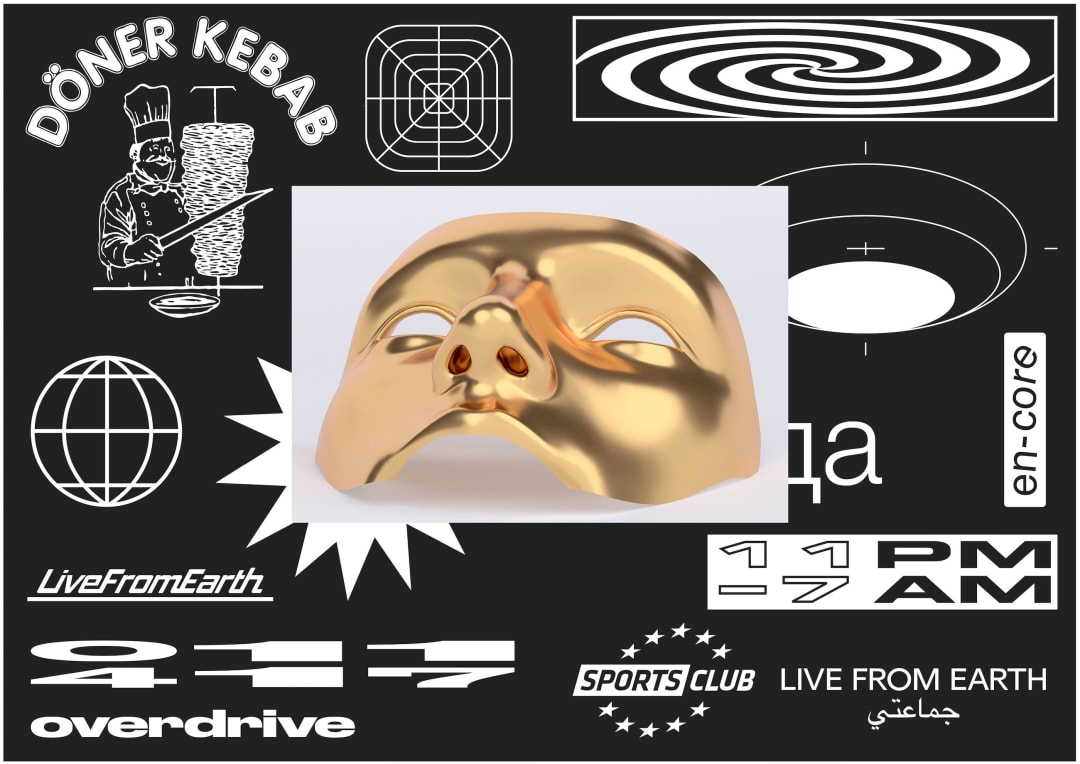
Where have all the “cheap parties” gone?
In 2014, following the success of their music video production and their YouTube channel, the collective started “Live From Earth w/”, their first party series. It was a new event that focused on bringing a variety of international music acts to Berlin to play at either OHM, an intimate space operated by Tresor, or St. Georg, a sweaty basement venue hidden near Moritzplatz. The series played host to diverse lineups, featuring acts like footwork originator RP Boo, Janus resident Kablam and Paris-based gabber collective Casual Gabberz. They also managed to book Yung Lean affiliates Bladee and Ecco2k.
En-core is the crew’s latest project. It’s a club night with a name that slyly refers to the hardcore styles of music that the collective hopes to reintroduce to electronic music fans. For a taste of what that party is like, check out our review of their second event at Arena Club, which featured Italian gabber revivalist Gabber Eleganza and French neo-hardcore practitioner Sentimental Rave.
The collective is determined to bring back “cheap” intimate parties. And in the past few months that has played out with events across Berlin.
“Everything here has become about the cliché ‘Berlin image’. For me that has nothing to do with the lust for dancing,” says DJ Gigola. “We as a collective want to shift the focus from the image back to the music, to dancing. Dancing needs to be accessible again—everyone has the right to the release that comes with affordable partying.” This explains why they tend to prefer unusual small-capacity venues that club-goers wouldn’t normally frequent.
We as a collective want to shift the focus from the image back to the music, to dancing. Dancing needs to be accessible again—everyone has the right to the release that comes with affordable partying.
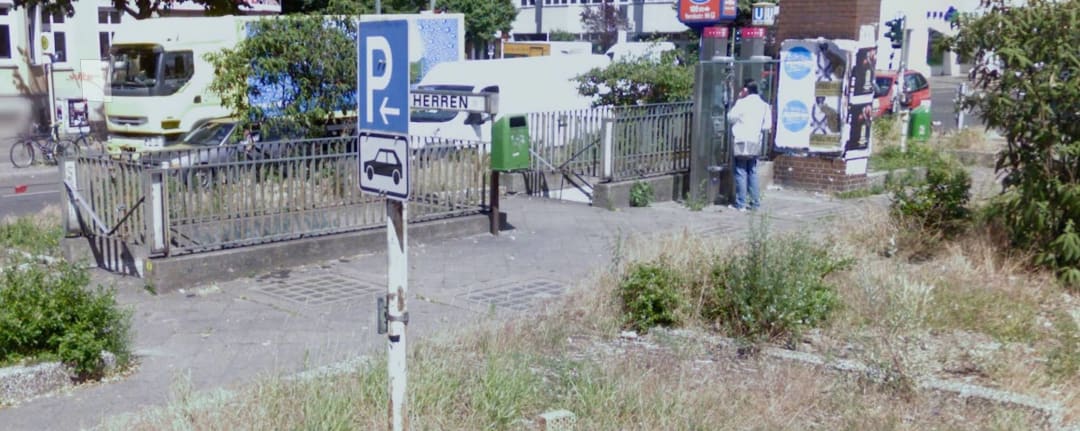
Live From Earth throws parties in these unusual west Berlin clubs
Ku’damm Karree: A former department store in the 23-story Ku’damm Square skyscraper that towers over Charlottenburg’s Kufürstendamm shopping corridor.
Kumpelnest 3000: A former Tiergarten brothel turned mythical queer bar opened in May 1st, 1987 by Mark Ernestus. That’s the same Ernestus who also opened Berlin’s Hard Wax record store and who co-founded Berlin dub-techno duo Basic Channel. Unlike the well-known austere concrete interior of his record store, the bar is adorned with kitschy décor and brightly colored carpet.
Zum Umsteiger: A now-closed Kneipe, or local pub, beneath the Yorckstraße S-bahn platform in Schöneberg. It frequently doubled as a club, which made it an ideal choice for the collective’s Sekt auf Eis party, where the collective celebrated the launch of their new pop-up and group exhibition, which opened at a Schöneberg based gallery space in late 2017.
Zur Klappe: A former underground bathroom in Kreuzberg converted into a dance club. In the ‘80s, it was a popular cruising spot for gay men at a time when homosexuality was still relatively clandestine. In 2018, the space was converted into a club, and it’s quickly established a reputation as being one of the city’s more exciting small venues. We’ve written about it before—local techno imprint Dystopian throws weeknight parties there.
8 essential Live From Earth artists
Yung Hurn
When talking about Live From Earth, it’s inevitable that Yung Hurn’s name is mentioned. The rapper, who originally hails from Vienna’s Donaustadt, has quickly become one of the most recognizable figures in German rap. He’s reluctantly earned that status over the course of the past few years thanks to his enigmatic personality, Dadaistic lyricism and method acting-like approach to performance on the stage and online (beyond Yund Hurn he also maintains alter egos in K. Ronaldo and Fiona Swarovski Jr.). Earlier this year Live From Earth released 1220, his debut album, which is made up of short tracks that barely crack the 3 minute mark. His delivery is irreverent, spaced-out and drenched in irony—listen to album single “OK Cool”, featured above.
Though in many ways he represents Live From Earth’s connection to the German rap underground, like many people in Austria and Germany he also has roots in dance music. Growing up in Vienna, he was into the nosebleed hardcore techno genre known as Schranz. His 2016 Krocha Tape pays homage to this in its name, which refers to the local neon-draped dancing crews known as Krocha.
In addition to his work as a solo artist, he also plays in a band called Love Hotel Band, which releases pitch-perfect ’80s-influenced German adult contemporary tracks like “Diamant”. Despite the tongue-in-cheek nature of the song, and the degree of irony that courses through most of his work, it’s the sincerity behind it and just about everything that Hurn does that makes his music such a fit for the current moment.
ACOID
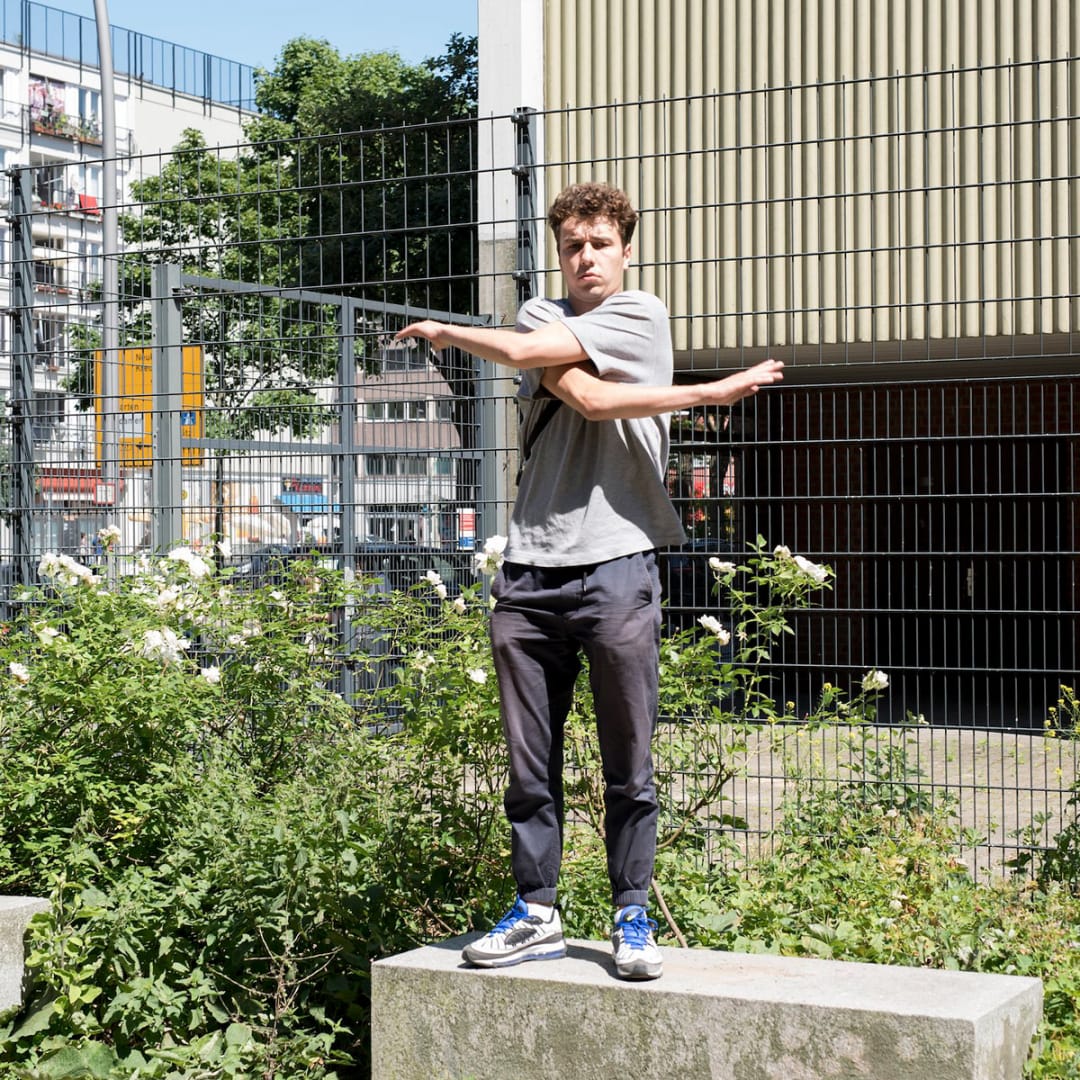
ACOID produces music that fuses footwork, trap and ghetto styles with an eclectic approach to genre recombination. His music blends ethereal, new age beats with ambient samples and airy sounds that align perfectly with the slurring vocals his collective’s rappers helped popularize.
After being introduced to breakdancing, scratching, break and funk music at a young age in Potsdam, ACOID became an avid online digger. He remembers, “My inspirations were more so found online. I used to dig for seven hours each day and night, and my mom would burst into my room and yell at me, telling me to get off the computer and go to bed.” He also discovered HHV Mag—a magazine released by prominent record and streetwear store HHV—which led to his discovery of the wonky leftfield sound pioneered by Brainfeeder Records artists like Flying Lotus and Samiyam.
ACOID’s older brother is also a producer who creates music under the alias Modem. The two often work together, and their trap-indebted beats helped to form the sonic background for rappers and Live From Earth members Yung Hurn, Caramelo and MCNZI. Their work can best be understood through their joint EP Comando Amore.
Caramelo
Caramelo’s tracks layer trap and Memphis-style beats with freestyled lyrics, resulting in a lo-fi style that mixes the feeling of old-school DIY rap with a new-school, SoundCloud rap twist. His hybrid, outsider hip-hop aesthetic has gained traction in different niches, and he actually recently played Berghain at one of the experimental Janus parties alongside Lotic.
Caramelo is from Rheda-Wiedenbruck, a twin community in the western German state of North Rhine-Westphalia. On the Wiedenbruck side, people listened to techno and house and threw parties in each other’s basements. In Rheda on the otherhand, where Caramelo is from, people threw their own DIY parties soundtracked by Memphis rap sounds by the likes of Project Pat and Kingpin Skinny Pimp. Southern rap’s darkness is a pervasive theme in Caramelo’s releases. This can heard in his Sirius B and Stairway 2 Heaven mixtapes.
His inspiration doesn’t end at rap, though—he says his latest mixtapes are heavily influenced by Icelandic producers, for instance. He says, “I’m always surfing through YouTube, getting lost,” While taking us through a dizzying web of everything from old R&B and Bossa nova to the works of late Japanese composer Susumu Yokota.
DJ Gigola
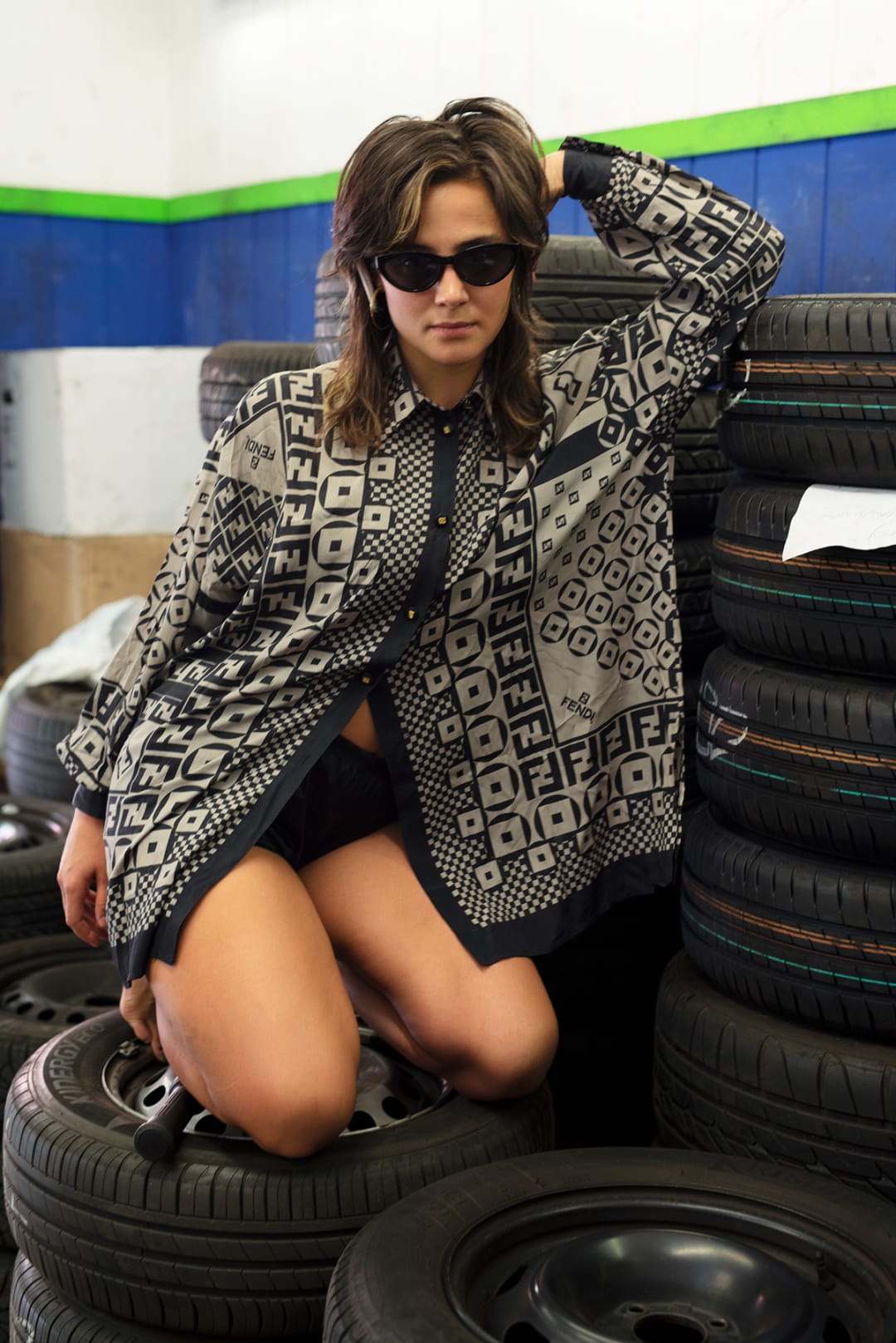
DJ Gigola feels most comfortable when she’s playing at high tempos. She DJs a style that mixes blasting hardstyle neo-rave euphoria with hints of jungle and ghetto-tech framed by classic techno. Shying away from the monotonous, slow-building tendencies of many Berlin house and techno DJs, Gigola’s sets tend to feature bold stylistic moves that challenging listeners to reconsider their tastes.
After becoming a regular at Ellen Allien’s BPitch club nights at the age of 15, Gigola would dig for DJs, expanding her taste until she was going out almost every night of the week—at this time in Berlin, it wasn’t hard to go clubbing underage. On Tuesday there was Cookies. Wednesdays were spent at Watergate. Thursdays were at Weekend. Fridays and Saturdays were the Arena Club nights, and then on Sunday, she’d pay five euros to see Ricardo Villalobos play Weekend’s rooftop sessions on the 15th floor of a dilapidated high-rise building overlooking Alexanderplatz.
These experiences formed her approach to DJing which moves from vibe to vibe and genre to genre. She opines, “I’ve always loved that the longer you do music, the harder you go. I didn’t want to do classic techno. I’ve lived in Berlin way too long to just play techno.”
She describes her style as a mix of different genres—built around everything from hard techno and deep house to Detroit and Chicago warehouse music—and she has a knack for repurposing “forbidden” songs that most seem to loathe, such as classic Eurodance tracks. She says, “I feel like so many people have forgotten about having fun with music. Everyone in Berlin is so intellectual and so serious about the ‘underground’. I want to listen to ‘Vogue’ by Madonna in the middle of a smashing techno set and then go back to techno again. That’s the whole DJ Gigola concept: bring a little fun to music.”
MCNZI/MCR-T
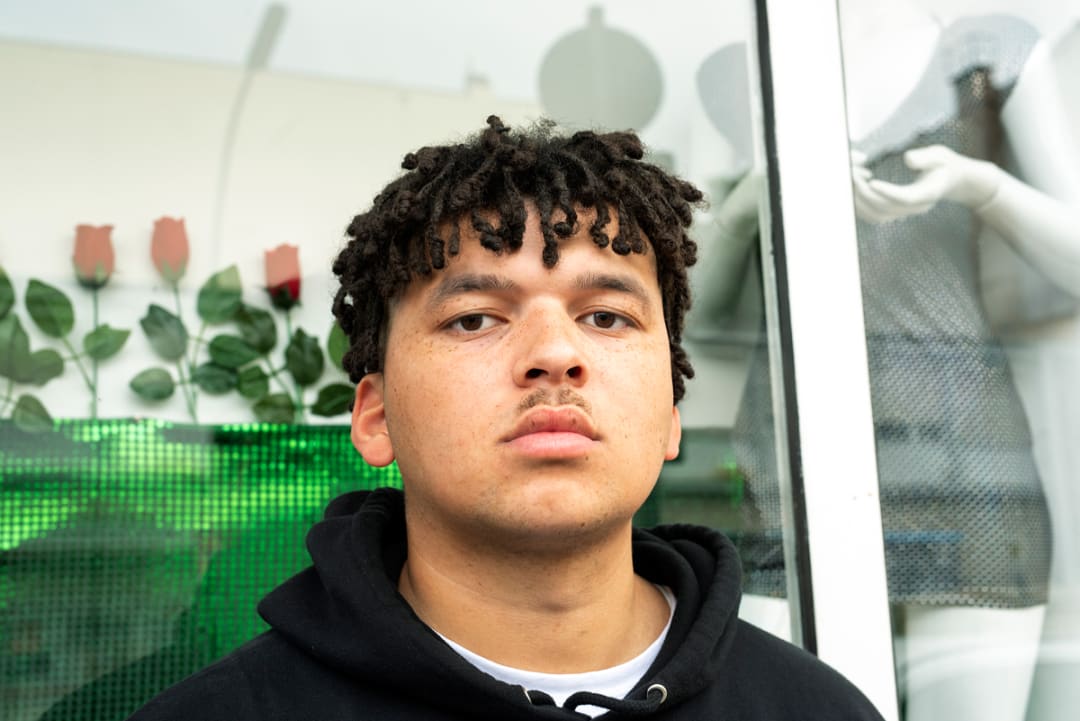
MCNZI (pronounced Mc-Nazi)’s name is actually a derogatory nickname given to the artist by his group of foreigner friends in the 9th grade, all of whom were half-German, half-something else. For MCNZI, being half-German, half-American meant he always felt out of place in both of his parents’ countries, and it’s likely this alienation contributes to his signature theatrical style. He writes from different points of view, changing the music, subject matter and his vocal delivery as he navigates between completely different identities.
“It’s a character. My form of punk,” MCNZI says of his name. “If the Sex Pistols can call themselves something like that in the ‘60s and ‘70s—during the rise of sexual freedom, then I reserve the right to call myself MCNZI during times where racial segregation and tensions are at an all-time high. This is my commentary.”
When he’s performing and producing as MCNZI, he creates hybrid verses by rapping in both German and English. When producing his heavy trap- and ghetto-style tracks, he embodies characters, engaging in near-method acting processes. He also builds visual experiences around the personalities. He uses lights, costumes and video material to create full representations of the tracks’ identities.
While the MCNZI project has always been laced with hints of techno and house, he reserves these sounds for his new project and alter-ego, MCR-T. In April, Live From Earth presented Kraft, as the first release on a new vinyl-only dance music series. It contained four tracks of banging, 140 BPM acid techno inspired by space travel. Between these two pseudonyms—and whichever ones he’ll adopt in the future, the rapper, producer and DJ shows how Live From Earth artists can’t be pinned down to one genre.
Bauernfeind
Bauernfeind produces Memphis-style hip-hop, dark techno beats and rave-centric new wave suited for sweaty DIY warehouse parties. While his recent work has been predominately hip hop-based—Bauernfeind regularly writes beats for Caramelo and Naru under the name DJ Creep—his productions, performances and DJ sets all revolve around club music, which he has been involved with since a young age.
After a time, Bauernfeind moved into the techno scene and started playing warehouses. It was at one of these warehouses, in California, that he met Matrixxman. Although the party was shut down, he kept in touch with Matrixxman, and collaborated with him on a double EP, which is scheduled for release in January 2019. According to Bauernfeind, the first EP of the two-part series pays homage to ‘80s and ‘90s Frankfurt-style techno, classic EBM and trance.
NARU
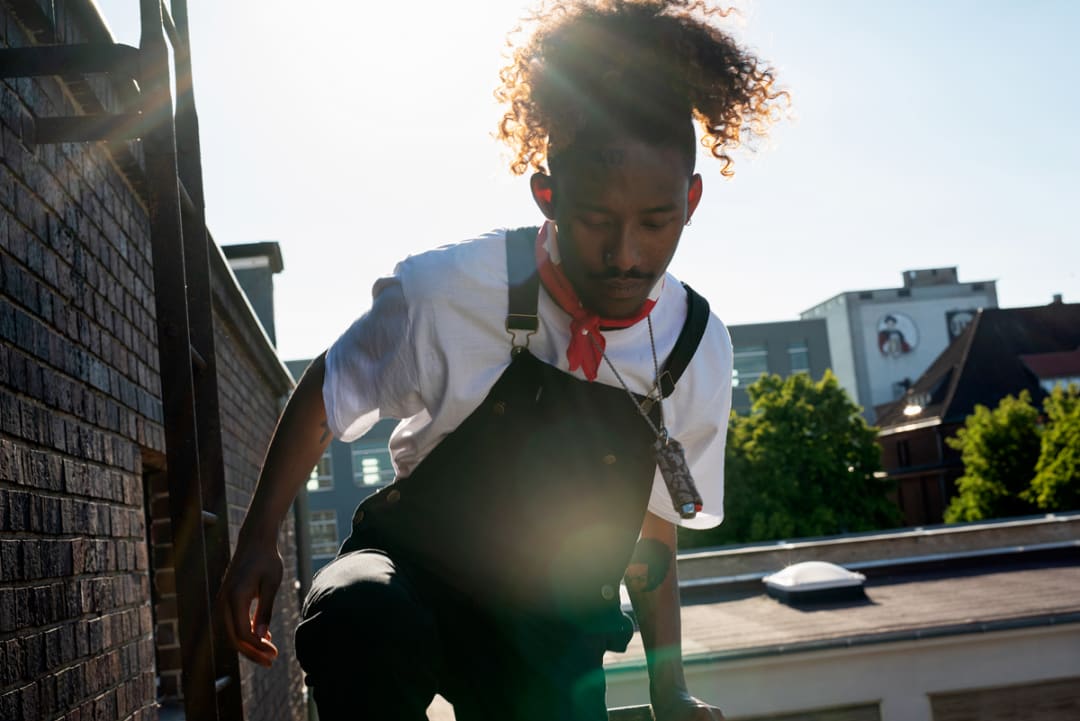
Thai-American rapper Naru is a new addition to the Live From Earth roster. His approach is a hybrid one that fuses rap with a variety of other sounds, like techno and Thai folk tunes.
Truly Naru, the artist’s first mixtape, was written over dark techno beats in a style that he was more-or-less forced into. Every morning, Naru used to wake up to banging techno played by his DJ roommate. “I’d wake and think, ‘Damn, that 808.’ Immediately, I would start writing bars over the top of those sounds, and because of that, my lyrics are very compatible with electronic music.”
On his latest release, Rudeboii, Naru swaps out those techno beats to dive deeper into lyricism. Working with Live From Earth affiliate DJ Creep and Lex Lugner, he created a nostalgic mixtape that reflects the rapper’s early hip-hop and R&B influences. Tracks like “IWNDBS” and “Flieg Mit Mir” demonstrate how he fuses heavy, complex verses with experimental forms of pacing.
There’s something romantic about the way Naru writes. He readily engages with nature and his own personal history. “I can’t write at home,” he says. “Sometimes I just sit on the bus and admire the view as it disappears beside me. Going to the sea and finding a beautiful outlook, even sitting on a train and watching the trees go by. That pushes my creativity.”
WOS

WOS is a collaborative DJ duo comprised of DJ Gigola and Anna. The two splice together different sounds during their sets: Anna explores Brazilian funk and soul while Gigola mixes in hip-hop, hard techno and what she calls “neo-rave”.
Anna hated school, so she spent ages 10-16 with earbuds in, exploring every kind of music that she could find online. Each day, she would wear a turtleneck, draping her hair over the cord of the earbuds, concealing them to avoid detention and enjoy her music in peace.
At 15, Anna started DJing ‘90s R&B in Berlin’s King Size Bar with a friend, forming the DJ duo WOS. The original WOS broke-up due to time restrictions, but it was later revitalized when Gigola, who was already Djing at the time, decided to come on board. The pair started playing together, keeping WOS—a name which they claim has no meaning—and were subsequently asked to be in one of Yung Hurn’s music videos. The vibe fit perfectly, and Live From Earth invited them into the collective.
Live From Earth Klub
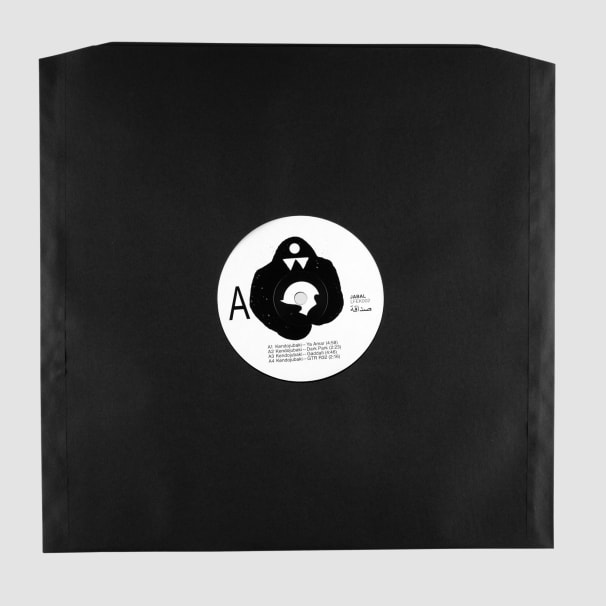
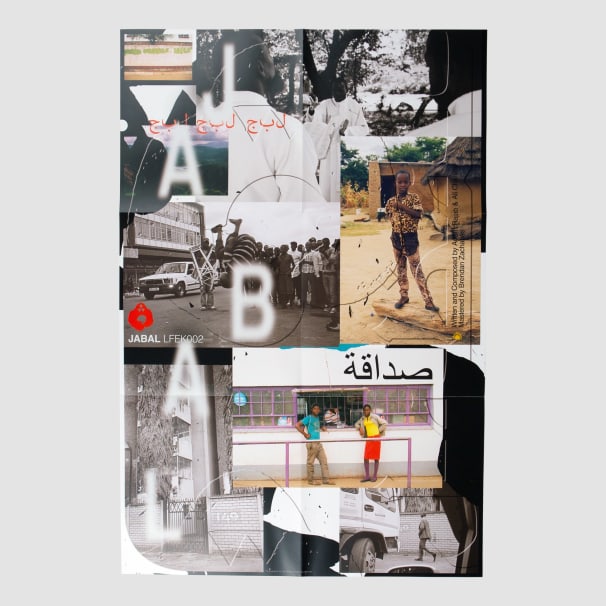
Through the recent launch of the collective’s En-Core Klub Series and coinciding Klub Vinyl label, Live From Earth’s’s already-prominent presence is set to grow, expanding into new projects showcasing the crew’s interpretation of clubbing and its surrounding culture. The collective’s mission statement remains the same: The crew will continue to bridge genres, politics and artistry through every medium possible. Catch them tonight at their party at Zur Klappe to celebrate the latest release on their ongoing Live From Earth Klub series: Kendojubaki and DJ Ali’s Jabal EP.
Published December 07, 2018. Words by Claire Mouchemore, photos by Elizabeth Claire Herring.

